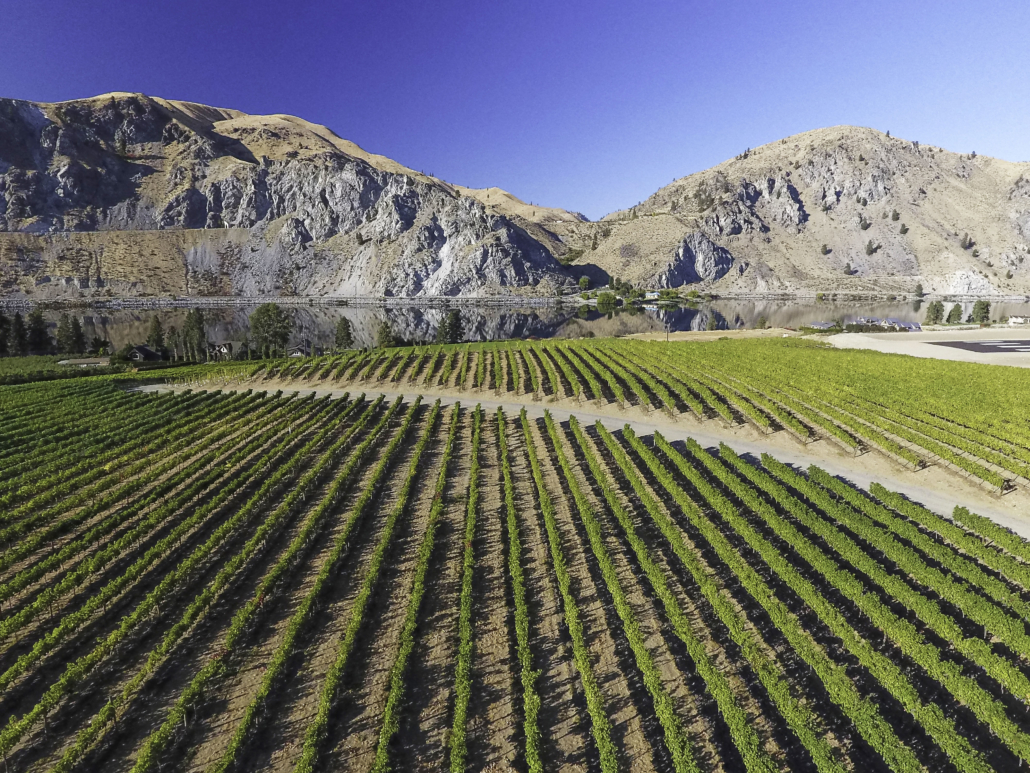Rocky Reach is Washington’s 20th American Viticultural Area
Defining characteristics of new AVA include geology, soils, topography, and climate.

Rocky Reach, officially designated as Washington State’s 20th AVA on June 3, 2022, is located in the northern reaches of the Columbia Valley south of Lake Chelan.
On June 3rd, the U.S. Alcohol and Tobacco Tax and Trade Bureau officially designated Rocky Reach as Washington State’s 20th American Viticultural Area (AVA). The new AVA is located in the northern reaches of the Columbia Valley south of Lake Chelan.
“We are extremely pleased to have the Rocky Reach AVA approved,” said David and Michelle Dufenhorst, who own Rocky Pond Winery and two vineyards located within the AVA. “This is an essential step towards recognizing what we’ve known for some time — that this is a remarkable place to grow and produce top tier grapes and wines.”
Located between Chelan and Wenatchee, Rocky Reach straddles the Columbia River and is wholly contained within the larger Columbia Valley AVA. The AVA covers 32,333 total acres, though the Columbia River and Rocky Reach Reservoir make up approximately a quarter of the area. There are currently eight commercial vineyards covering 117 acres located within the new AVA. The eight vineyards are: Buena Vista, Double D, Dick Mesa, Keystone, Pierre Family, Numeral Mountain, Ribbon Cliff and Rocky Reach.
The AVA takes its name from the Rocky Reach Dam and the Rocky Reach Reservoir, though the name originated from steamboat captains in the late 1800s who used the term to describe the rapids within a stretch, or ‘‘reach,’’ of the Columbia River.
To qualify as an AVA, a wine grape-growing region must have distinguishing features. According to Kevin Pogue, Professor of Geology at Whitman College, who wrote the AVA petition for Rocky Reach, its defining characteristics are its geology, soils, topography, and climate:
- Geology: Rocky Reach is unique from almost all other appellations in the Columbia Valley in that it has predominantly crystalline basement bedrock, a feature it shares with only Lake Chelan.
- Soils: While the area has the windblown sand and silt (loess) that is ubiquitous throughout the Columbia Valley, in Rocky Reach these soils overlie cobblestones and gravels. The cobblestones on the surface warm quickly and radiate heat to the vines, promoting faster ripening of grapes. These cobblestone soils are also course-grained and transmit water more efficiently to deeper soil horizons. This encourages vines to grow deeper roots compared to vines planted in silt and sand elsewhere in the Columbia Valley.
While Rocky Reach’s soils share similarities with those found in the Lake Chelan AVA, there are important differences. Rocky Reach has a greater percentage of cobblestones. Meanwhile Lake Chelan soils have more volcanic ash and pumice. Additionally, Lake Chelan soils contain glacial till and erratics, which Rocky Reach does not.
- Topography: Rocky Reach is located in an area of the Columbia River where the river has eroded a deep canyon. Within this canyon are flat-topped terraces along both sides of the river near the valley floor. These flat-topped surfaces are ideally suited for viticulture and other agriculture and are where most vineyards are currently planted.
- Climate: Rocky Reach is located at low elevations within this valley. These lower elevations are considerably warmer and have a longer growing season relative to the surrounding mountains and plateaus.
“Rocky Reach represents an important milestone as our state’s 20th AVA, further signifying the continued growth and development of our wine industry,” said Steve Warner, President of the Washington State Wine Commission.
Beginning on July 5, 2022, wineries may submit a Certificate of Label Approval (COLA) request to the TTB for a label using Rocky Reach AVA as the appellation of origin.



